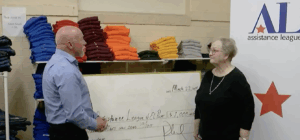Today, November 12, 2013, the Teacher Retirement System of Texas (TRS) held a meeting to share its August 2013 actuarial valuation of the pension trust fund and to provide an update on the TRS-Care retiree health insurance program. While much of the news shared was good, a common sentiment that was shared by both actuaries and TRS staff members was that legislative changes made in 2013 need to be maintained.
TRS Executive Director Brian Guthrie thanked everyone attending the meeting for their support during the 83rd Legislative Session, stressing that Senate Bill 1458 successfully made the pension fund actuarially sound for the first time in many years.
Mostly Good News
The forecast for the pension fund is dramatically improved, almost entirely as the result of the SB 1458 legislation. This is because SB 1458 increased revenues from the state, the active employees and added a new revenue stream from the school districts which goes into effect in 2015.It is important to know that when revenues change, the accumulation occurs over time. In other words, it is vital that TRS continues to receive these contribution levels in order to maintain actuarial soundness in the future.
As of August 31, 2013, the fund has a market value of $117.4 billion, compared to $111.4 billion a year ago at the same time. The funded ratio was 80.8% as of August 31, 2013, which is higher than expected. The market value of the fund also improved since last year, and is now at 77.9% compared to 77.2% last year.
TRS had a return of 8.9% in investments, higher than the projected return of 8%. Liabilities for the system grew more slowly than expected, partly due to lower than projected salary increase for active employees (this was 2.5% as opposed to the expected 5.5%). This resulted in an actuarial gain of almost $2 billion. Payroll growth increased slightly over projections as well due to a population increase in active employees in 2013.
There was a slight increase in liabilities this year, due to the $700 million cost to fund a permanent cost-of-living increase for 200,000 TRS retirees. Actuarial calculations are based on a variety of factors and can be confusing at times, but because of SB 1458, TRS could have $31.3 billion in unfunded liabilities and still be considered actuarially sound by state law. This is good for the TRS investment team because it allows for more market volatility and results in much smaller swings in the funding period over time.
The current unfunded liabilities are $28.9 billion, and will grow slightly to about $32.2 billion in 2014 with a ratio of 79.5% (assuming 8% return on investments). TRS cautioned that the unfunded liability of the pension fund will grow slightly for a few years. This is due in part to the fact that the new contribution rates for the fund are going into effect over a period of several years.
The liability will actually appear to grow in dollar amount for the next 20 years, but the funded ratio will improve. This phenomenon is part of the plan. If the fund follows this pattern as projected, this will bring TRS to 100% funded status within 28 years. 20 years from now, the unfunded liabilities for the pension fund will actually be higher than they are today. However, they should be 0 by the end of 28 years if contribution levels remain the same.
TRS also stated that if contribution rates returned to what they were prior to the implementation of SB 1458, the fund will be right back where it started. If everything that was accomplished by SB 1458 was undone in 2015, there would not be much improvement to the system at all. We must fight to keep the changes put in place by SB 1458!
An independent actuary speaking during the meeting also recommended that any future COLAs ideally should be tied to an increase in revenues. He also stated that the fund would need to be 100% funded to grant regular COLAs without requiring additional revenue. Without it, the risk of having to cut benefits down the line for future retirees increases substantially. Right now, TRS says “we are not there.” He estimated that it takes about a 10% increase in revenues to pay for a 1% recurring COLA.
The GASB Effect
As you may have read in earlier articles produced by TRTA, many of the changes made to TRS this year were made to prevent a huge increase in pension fund liabilities with the advent of new Governmental Accounting Standards Board (GASB) rules in 2014.
The new standards force a fund to pass a test to determine if it can continue to use its usual investment return assumption. Based on last year’s funding level and unfunded liabilities, TRS would have failed the test. With all of the changes put into place by SB 1458, TRS expects to pass and be able to use the usual 8% investment return assumption. Again, this possibility is based upon the new contribution rates established by the legislation continuing into the future.
TRS-Care Briefing
An update on the TRS-Care retiree health insurance program yielded information that is similar to what we have been hearing throughout 2012 and 2013. TRS-Care is expected to be solvent through the end of FY 2015. However, it faces a shortfall into the billions after that time if nothing is done to improve it.
TRS Executive Director Brian Guthrie said that the sustainability study done on TRS-Care in 2013 will be updated this year. In February 2014, the TRS Board of Directors is meeting in Corpus Christi and will host a town hall meeting about health care. TRTA members are welcome to attend this meeting in person to provide feedback and ask questions. TRS will also address comments and questions via phone calls and emails. The exact date of the meeting has not yet been determined. TRTA will report this information as soon as it becomes available.
Many of our members ask why TRS-Care is experiencing significant financial issues. Although the new Aetna Medicare Advantage plan introduced this year did create some cost savings for TRS-Care, it has not been enough to overcome the cost drivers of the plan. The most significant cost driver of TRS-Care is the non-Medicare eligible category of participants. The cost for those participants is about 12 times as much as Medicare participants. Other drivers include increased prescription and medical costs, as well as increased utilization of the plans due to aging population.
The Medicare Advantage plan has about 70% of those eligible to participate using the plan, which is about 80,000 people. Participation in the Medicare Part D prescription plan is at about 83%.
Today’s report by the independent health care actuary confirms the concerns that TRS-Care faces a major funding shortfall in the very near future. TRS cautioned that the plan will need reform, possibly in the form of increased revenues, increased retiree premiums, benefit reductions, or a combination of factors. Right now, retiree premiums account for 34.2% of the cost of TRS-Care. Contributions from the state account for 23.2%.
Looking Ahead
TRTA already is working with all parties, legislators, our friends in the active educator community and more to protect the TRS fund and our vital TRS-Care program. Any retiree or active employee who cares about their retirement security needs to know that TRTA is committed to protecting and improving these plans for YOU!
Thank you to all of you who are members and who help us meet these challenges. If you are not a member and you want to be involved in protecting the TRS fund and the TRS-Care program, we need you to join the Texas Retired Teachers Association (TRTA). TRTA will be involved in every meeting, action opportunity, and hearing about these critical programs.
Thank you for being a valued member of TRTA. If you are not a member and would like more information about joining, please contact us at 1.800.880.1650 or visit us online at www.trta.org.



